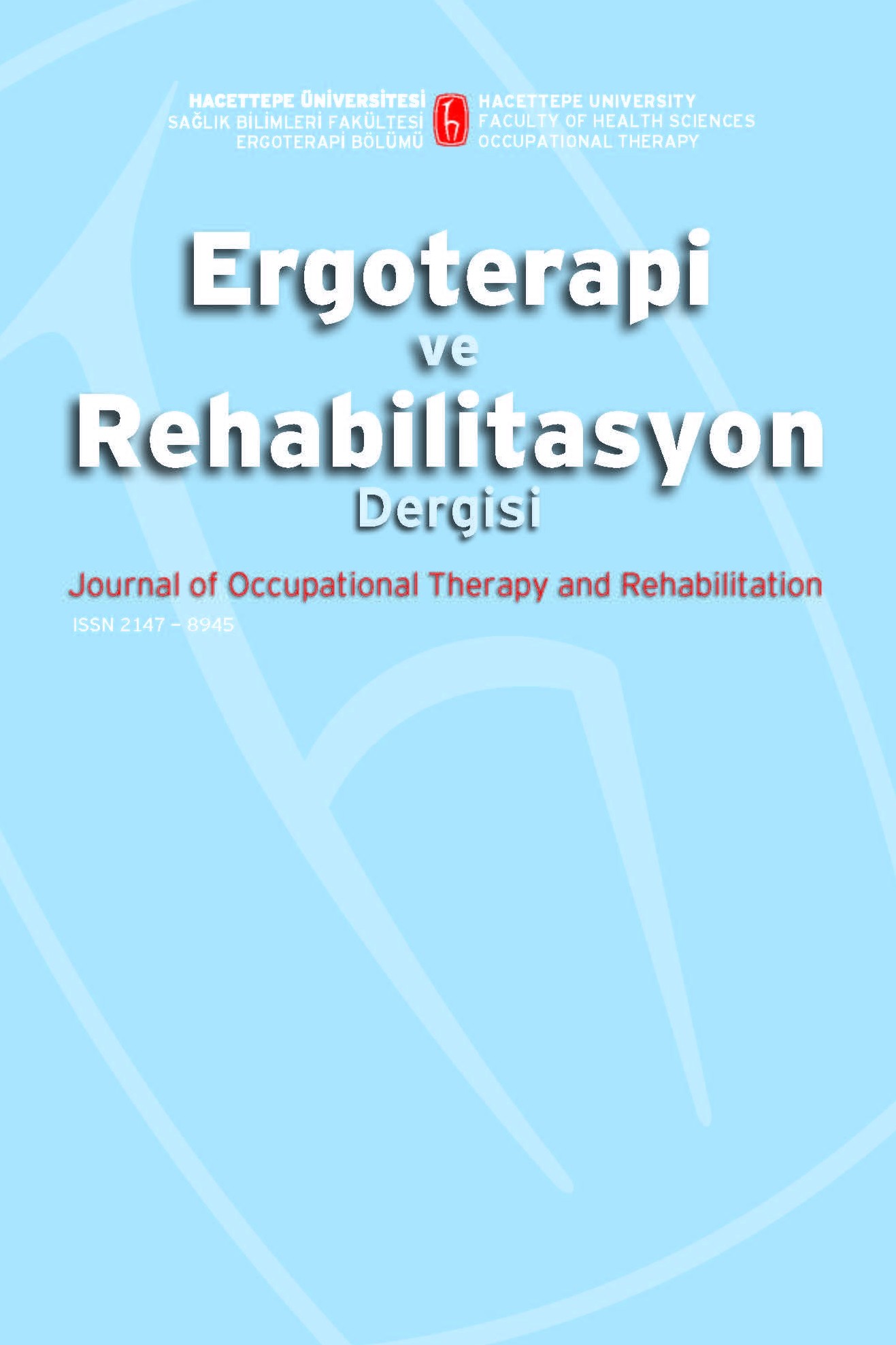Su İçi Terapatik Aktivitelerin Vestibuler İşlem, Postür Taklidi, Bilateral Motor Koordinasyona Etkisinin İncelenmesi
Amaç: Çalışmanın amacı su içi terapatik aktiviteler tedavisinin otizmli çocuklarda vestibuler işlem, postür taklidi, bilateral motor koordinasyona etkisini incelemekti. Gereç ve yöntem: Otizm spektrum bozukluğu tanısı almış 4-11 yaş aralığındaki 2 çocuk çalışma grubu olarak, 2 çocuk da kontrol grubu olarak alındı. Çalışma grubu su içi terapatik aktiviteler tedavisi ve duyu bütünleme tedavisi alıyorken, kontrol grubu sadece duyu bütünleme tedavisi almaktaydı. Hacettepe Üniversitesi Beytepe Olimpik Yüzme Havuzu’nda haftada 2 gün 30-40 dakika olmak üzere 7 hafta (14 seans) yapılması planlandı. Çalışma grubu ve kontrol grubuna müdahale öncesi ve bitiminde olmak üzere 2 defa değerlendirme yapıldı. Dunn Duyu Profili ile vestibuler işlem ve Ayres’in bazı parametreleriyle de postür taklidi, bilateral motor koordinasyon değerlendirildi. Sonuç: Alınan olguların değerlendirme sonuçları göz önünde bulundurularak su içi terapatik aktiviteler tedavisinin otizmli çocuklarda vestibuler işlem, postür taklidi ve bilateral motor koordinasyonu artırdığı düşünülmektedir. Tartışma: Su içi terapatik aktivitelerin vestibuler işlem, postür taklidi ve bilateral motor koordinasyonu artırdığı düşünülmektedir. Daha kanıta dayalı olması için daha fazla olgunun alınması, seans sayısının artırılması ve kişinin duyu profili göz önüne alınarak kişiye özel müdahale planı hazırlanması önerilmektedir
Anahtar Kelimeler:
Otizm, Hidroterapi, Psikomotor performans
Effects of Aquatic Therapeutic Activities on Vestibuler Processing, Postural Imitation and Bilat- eral Motor Coordination
Purpose: Aim of the study was to investigate the effects of aquatherapatic activity training on vestibular process, posture imitation, bilateral motor coordination on children with autism spectrum disorder. Material and Methods: Two children between 4-11 years and diagnosed with autism spectrum disorder were included as intervention group, 2 children with same demographic properties were included as control group. Intervention group were treated with sensory integration treatment and aquatherapatic activity treatment, the control group only received sensory integration treatment. Interventions were planed twice a week for 30-40 minutes for each session at Hacettepe University Beytepe Olympic Pool. Two assessments were applied to both groups as pre-intervention and post-intervention. Vestibular processing assessed with Dunn Sensory Profile, bilateral motor coordination and posture imitation were assessed with some parameters of Ayres. Results: It was thought according to assessment results of intervened cases, aquatherapatic activity treatment affects bilateral motor coordination and posture imitation. Discussion: It was thought aquatherapatic activity treatment affects bilateral motor coordination and posture imitation. It was suggested for evidence based practice to include higher number of cases, higher number of sessions and person-based intervention planning according to his/her sensory profile
Keywords:
Autism, Hydrotherapy, Psychomotor performance,
- ISSN: 2147-8945
- Yayın Aralığı: Yılda 3 Sayı
- Başlangıç: 2013
- Yayıncı: Hacettepe Üniversitesi Sağlık Bilimleri Fakültesi
Sayıdaki Diğer Makaleler
Esra AKI, Keziban TEMUÇİN, Orkun Tahir ARAN
Hande GÜNEY, Gizem İrem KINIKLI, Sevilay KARAHAN, Onur ÇAĞLAR, Bülent ATİLLA, İnci YÜKSEL
Az Gören ve Görme Engelli Bireylerin Öz Yeterlilikleri ve Baş Etme Becerileri Arasındaki İlişki
Gamze EKİCİ, Zeynep ÇORAKÇI, Yasir ŞAFAK
Yaşlılarda Aktivite, Çevre ve Yaşam Memnuniyeti İlişkisi
Sinem SALAR, Ayla GÜnAL, Serkan PEKÇETİn, Meral HuRİ, Babak Kashefi MEHR, Gülfer KATIRCIBAŞI, Mine UYANIK
Türkiye’de Erken Müdahale Kavramına Yönelik Yapılmış Lisansüstü Tezlerin İncelenmesi
